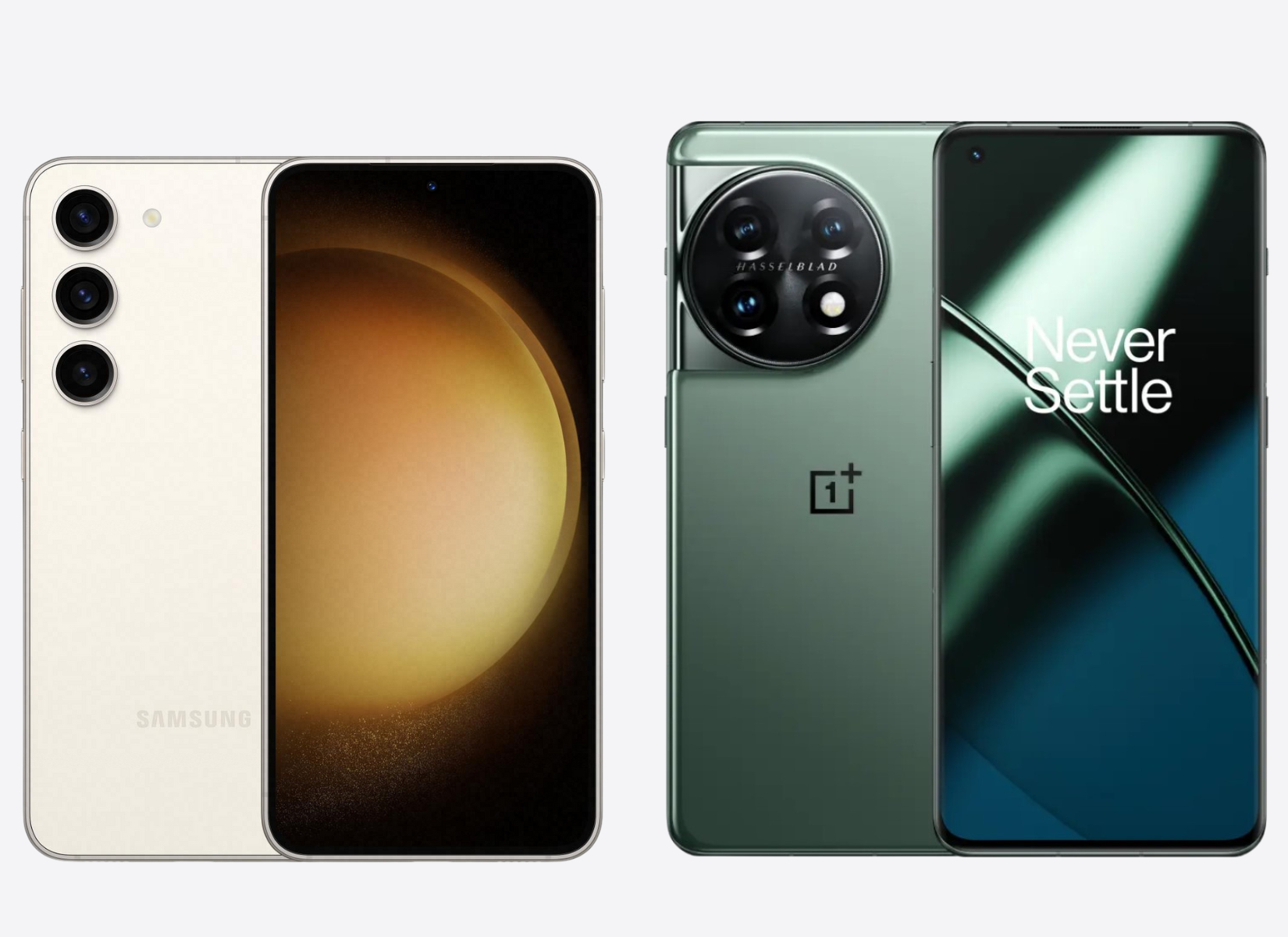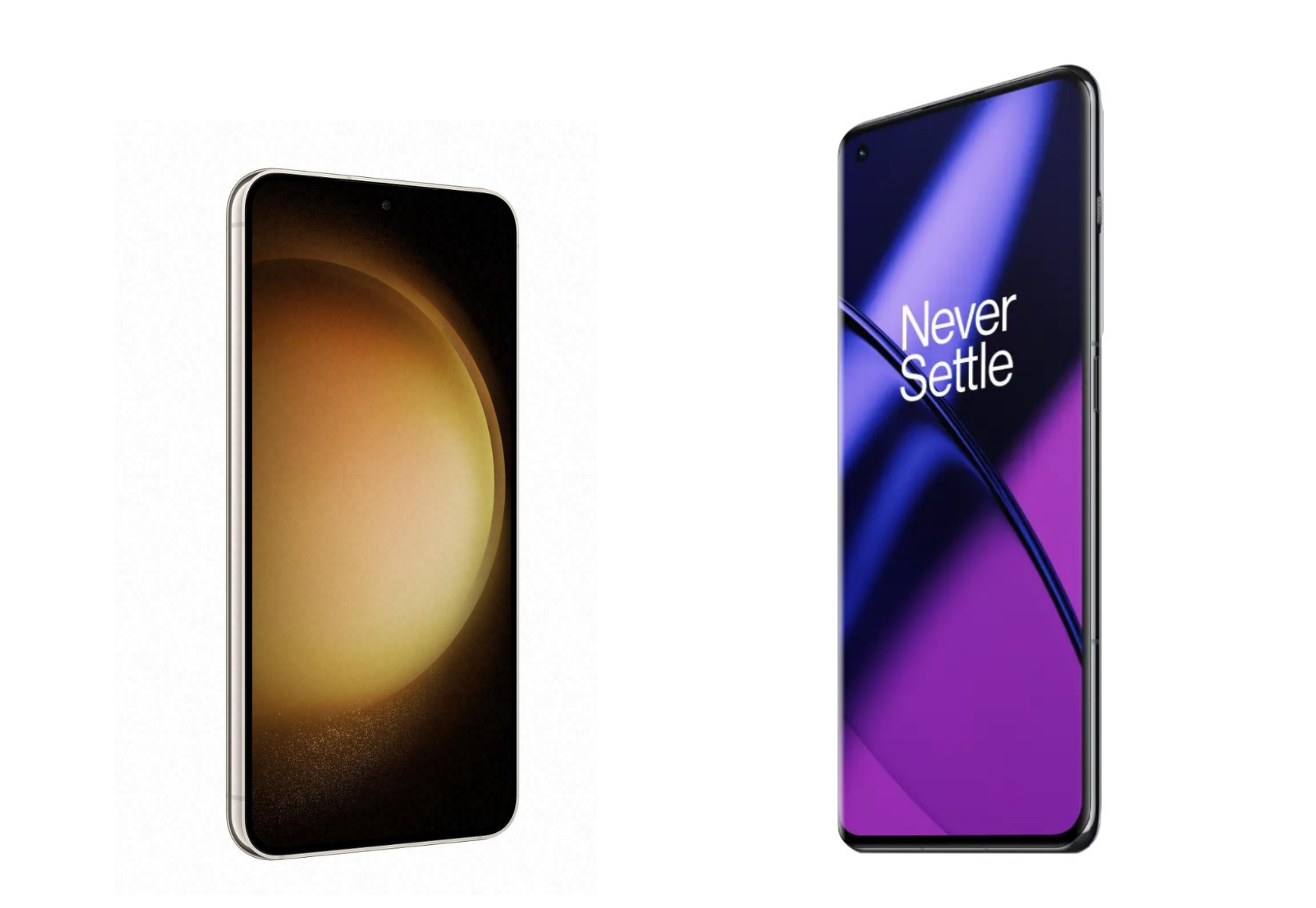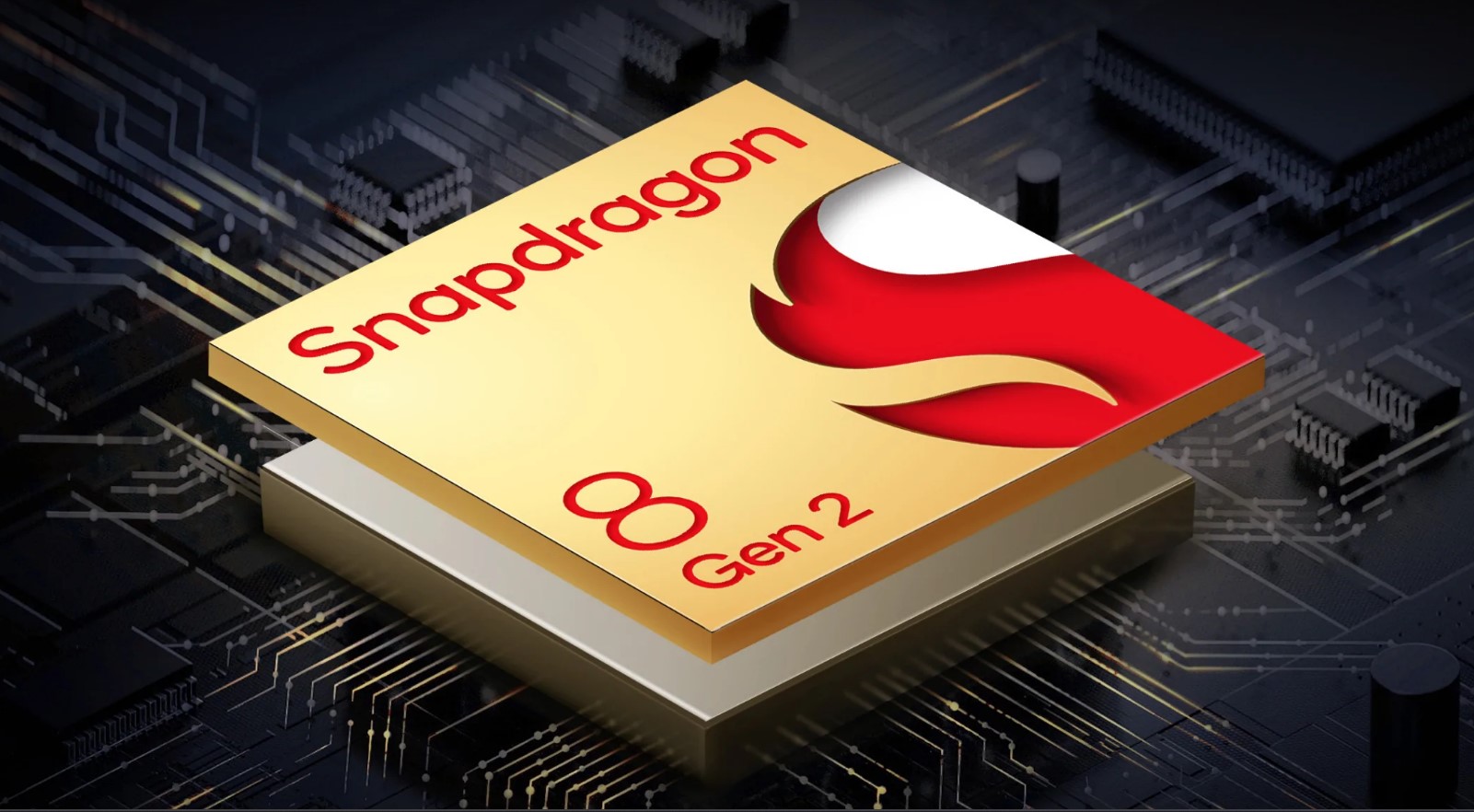Samsung Galaxy S23 vs OnePlus 11 comparison: what’s different between the two flagships?
Samsung finally unveiled the Galaxy S23 series this week during the Unpacked event where it introduced the vanilla Galaxy S23, Galaxy S23 Plus, and the heavy-duty Galaxy S23 Ultra. With the event done and dusted, OnePlus is next in line to host its mega event on February 7th where the company is all set to launch its flagship smartphone, OnePlus 11. While the Indian pricing is yet to be revealed, the OnePlus 11 could rival the base Galaxy S23 when it officially goes on sale in the next couple of weeks.
On that note, let’s dive into a comparison and look at how the OnePlus and Samsung flagships differ from each other with regard to price, design, camera, battery, and more.
Samsung Galaxy S23 vs OnePlus 11: price in India
Starting off the comparison with the pricing, the Samsung Galaxy S23 has been launched in India at Rs 74,999 for the base 8GB + 128GB storage variant. There is also an 8GB + 256GB option that costs Rs 79,999.
The OnePlus 11 on the other hand was launched in China in January at a price tag of RMB 3,999 (approx Rs 48,000) for the 12GB + 256GB model, RMB 4,399 (around Rs 52,900) for the 16GB + 256GB variant, and RMB 4,899 (approx Rs 59,000) for the 16GB + 512GB storage option. The handset’s global launch is set to get underway on February 7th where OnePlus will also unveil the India-specific pricing.
Samsung Galaxy S23 vs OnePlus 11: design, display, performance, and camera
With pricing out of the way, let’s look at the other aspects of the Samsung Galaxy S23 and OnePlus 11, such as the design, display, performance, and cameras.
Design

Beginning with the rear design, the Samsung Galaxy S23 features a three-camera layout stacked upon each other while the OnePlus 11 follows a similar design language as its predecessor by clubbing all the cameras in a single module with the difference being this time around it is a circular layout instead of a rectangle. Coming to the frame, you would find an alert slider along with the power button on the right side of the OnePlus 11 while the left side carries the volume buttons. As for the Galaxy S23, the power button and volume rockers are both situated on the right side. There is a USB-C port along with the speakers at the bottom of both handsets.
Protecting the front display is the Corning Gorilla Victus 2 on the Galaxy S23 and Corning Glass Victus on the OnePlus 11. Furthermore, the Galaxy S23 bags an IP68 rating for shielding the device from dust and water
Display

When it comes to screen size, the OnePlus 11 touts a much larger 6.7-inch 2K AMOLED display as compared to Galaxy S23’s compact 6.1-inch FHD+ Dynamic AMOLED display. Besides that, the OnePlus 11 comes with the support of LTPO 3.0 which can fluctuate the refresh rates between 1Hz to 120Hz according to the content being displayed on the screen. The Galaxy S23 on the other hand just gets an adaptive refresh of 48Hz to 120Hz. The display panels on both handsets offer HDR10+ and Always On Display with the OnePlus 11 going one step ahead by bagging Dolby Vision support.
Coming in favour of the Galaxy S23 is the 1750 nits of peak brightness support in contrast to the OnePlus 11’s 1300 nits of peak brightness.
Processor, RAM, and storage

Both Samsung and OnePlus flagships run on Qualcomm’s latest Snapdragon 8 Gen 2 SoC with the Galaxy S23 rocking a modified variant of the chipset made specifically for the Galaxy S23 lineup. Aiding the processors is a large vapor chamber on both handsets that helps in keeping the temperatures balanced during extensive workloads which include high-end gaming, recording videos, and downloading or uploading large amounts of data. The Snapdragon 8 Gen 2 SoC also lends both devices an array of 5G bands for ultra-fast internet connectivity.
Coming to the storage options, the Galaxy S23 is available in 8GB RAM with 128GB ROM and 8GB RAM with 256GB ROM models. The OnePlus 11 in China is offered in 12GB RAM with 256GB ROM, 16GB RAM with 256GB ROM, and 16GB RAM with 512GB ROM storage options.
Camera

In terms of cameras, the Samsung Galaxy S23 carries a triple rear camera setup consisting of a 50MP OIS-enabled primary sensor, a 120-degree 12MP ultra-wide angle lens, and a 10MP telephoto camera with up to 3x optical zoom. OnePlus on the other hand has once again partnered with Hasselblad to tune the cameras on the OnePlus 11 which include a 50MP primary sensor, 32MP telephoto lens, and a 115-degree 48MP ultra-wide camera. These handsets are capable of capturing up to 8K resolution videos with the Galaxy S23 even supporting HDR10+ recording capabilities. Another camera aspect where the S23 has an edge over the OnePlus 11 is with a 12MP selfie shooter that can record videos in up to 4K quality while the OnePlus’ handset is restricted to just 1080P at 30FPS.
Battery
Coming to the battery, the OnePlus 11 features a much larger 5,000mAh battery as compared to Galaxy S23’s 3,900mAh cell. Things further fall in the favour of OnePlus as it carries a much faster charging solution at 100W whereas the S23 is limited to just 25W charging. However, OnePlus has omitted wireless charging this time around which is something both OnePlus 10 Pro and OnePlus 9 Pro had. This comes as a plus for Samsung’s flagship as it continues to retain wireless charging along with 4.5W reverse wireless charging for juicing up to other phones and gadgets.
OnePlus makes up for the lack of wireless charging by generously providing an adapter within the box, which is something Samsung has completely axed on a majority of its devices, including the mid-range offerings.
For all the latest Technology News Click Here
For the latest news and updates, follow us on Google News.
